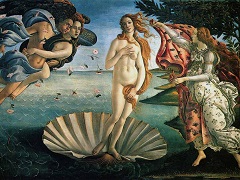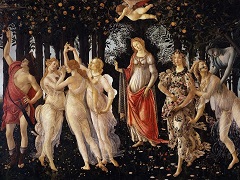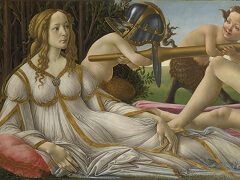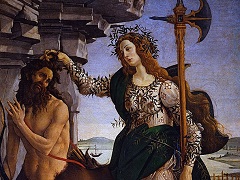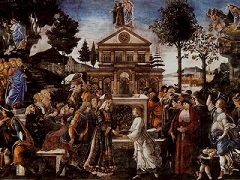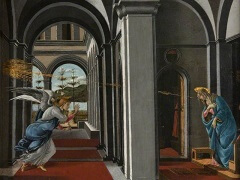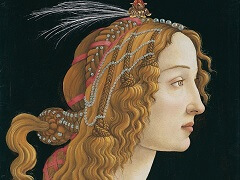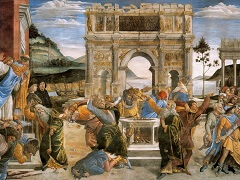Madonna of the Pomegranate, 1487 by Sandro Botticelli
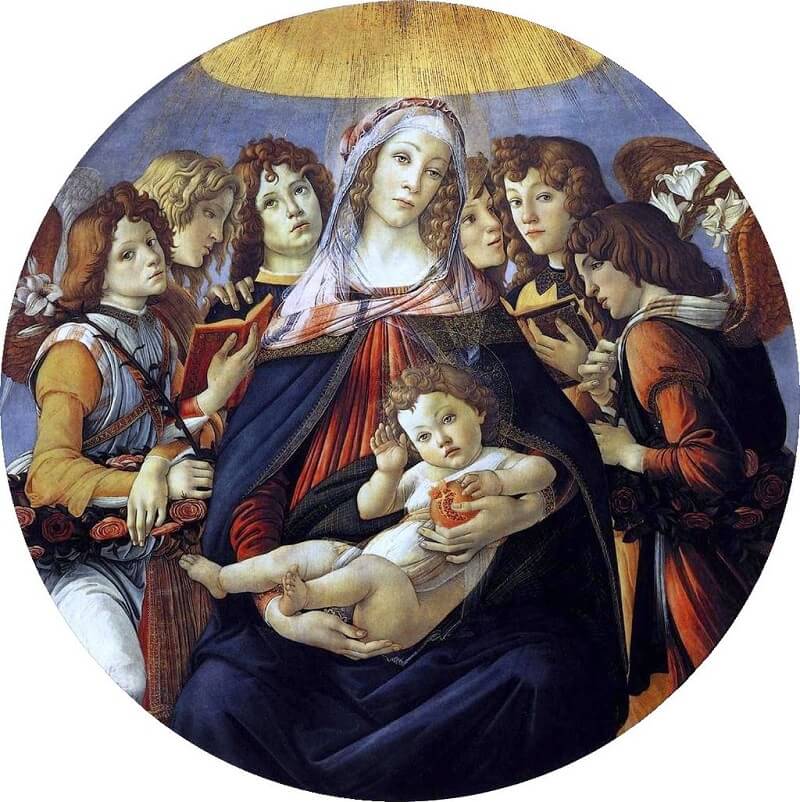
Botticelli painted the Madonna of the Pomegranate in 1487. The picture's title is explained by the pomegranate in Mary's hand: this should be understood to symbolize Christ's Passion, the wealth of seeds conveying the fullness of Christ's suffering. Botticelli has now arranged the angels symmetrically, thereby avoiding the compositional difficulties of the older depiction. A certain lifelessness of the figures in the picture can nonetheless be detected; while this may also be encountered in the mythological paintings from this period, here it holds the danger of superficiality. Mary is bowing her head in a manner that is mechanical, and the gestures and gazes of the angels make one conscious that the gentle vivaciousness encountered in the earlier depictions is missing here.
The Christ Child, whose hand is raised in blessing, is lying securely in the arms of Mary, but the sad, melancholy expression on the faces of mother and child are intended to remind the observer of the torments the Son of God will suffer in the future. The angels are worshipping Mary with lilies and garlands of roses. The Rosary is a prayer that was created in its present form in the 15th century, and rapidly became widespread.

